#cabbage with mushrooms
Text
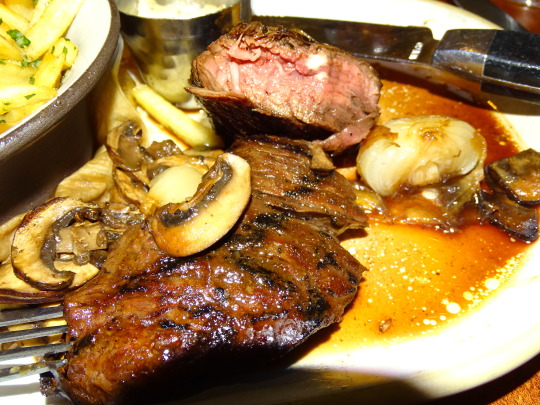
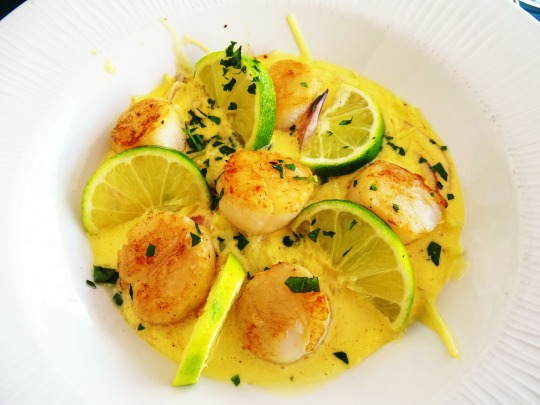


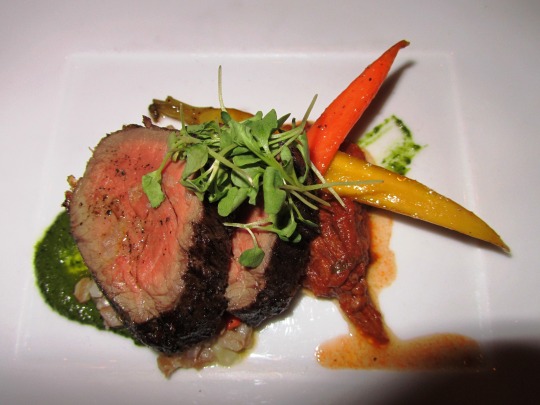
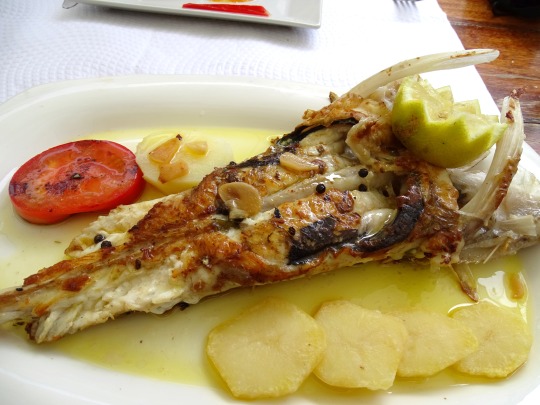



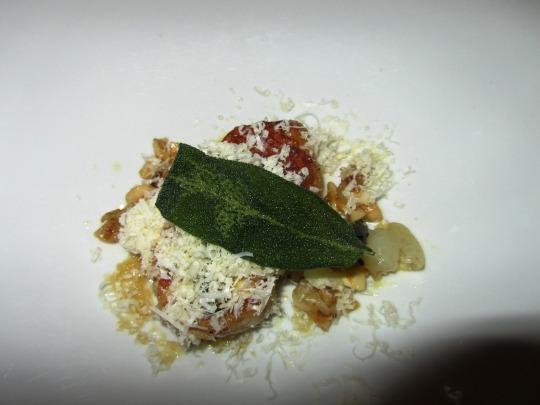

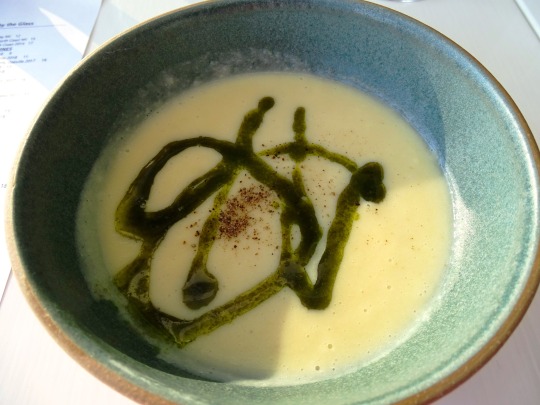
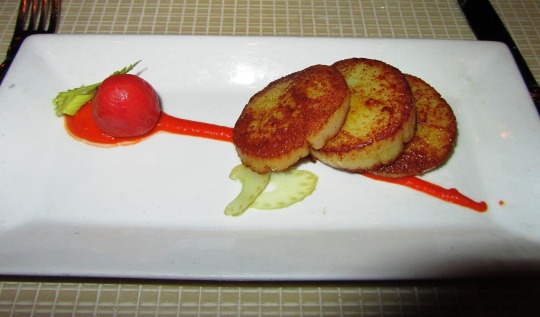
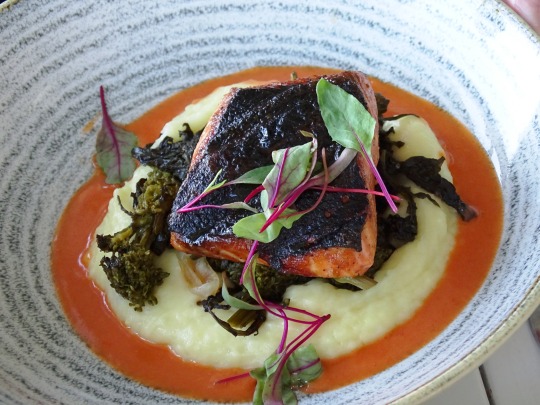
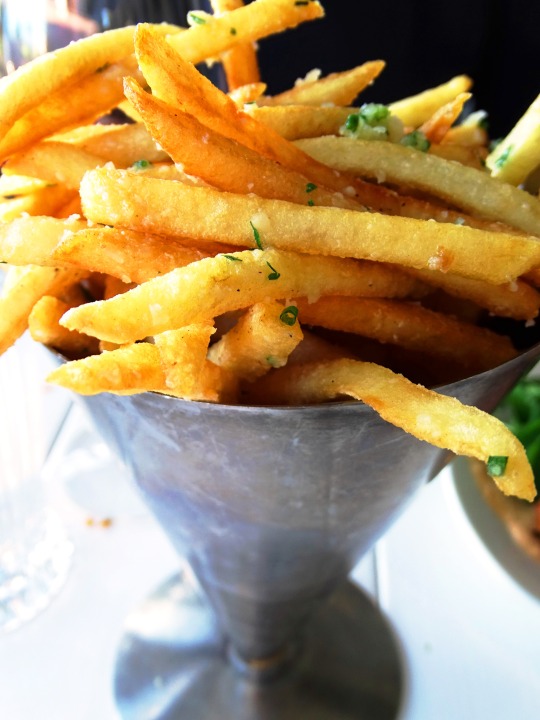

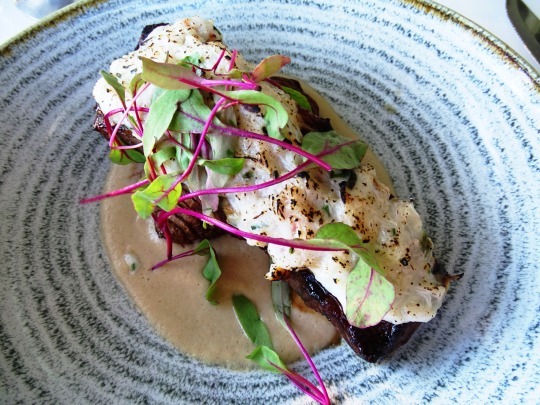
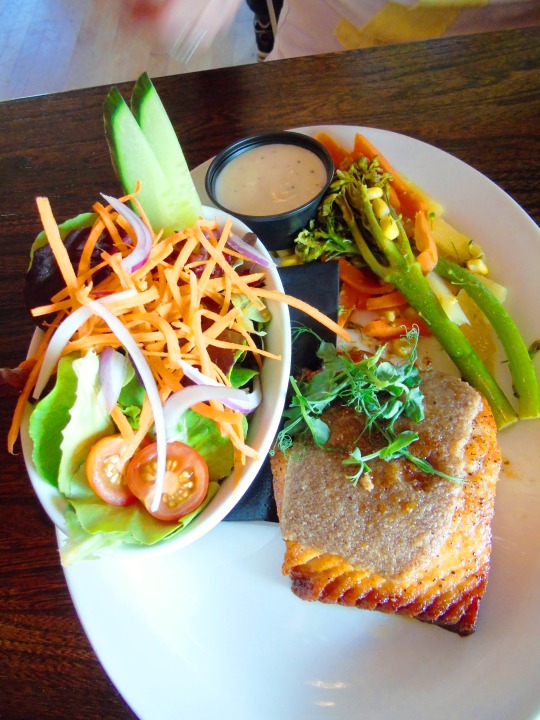
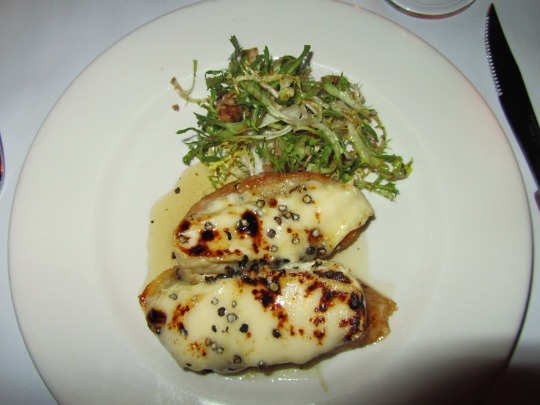
National Culinarians Day
Today we honor culinarians! They are cooks or chefs who are experts in cooking, preparing, presenting, and serving food. Today we celebrate and thank them for the many ways they use food to satisfy us!
While professional culinarians tend to work in restaurants or commercial kitchens, the culinary arts have a much humbler beginning. It is believed that the roots of culinary arts sprouted when someone either threw a piece of meat on a fire or found an animal that had been cooked by a forest fire. From there, advancements in agriculture, the expansion of culinary techniques, the domestication of livestock, and the introduction of earthenware and stoneware all helped with culinary development.
Chefs were first employed by kings, aristocrats, and priests. In contrast, the lower classes cooked for their own families. The distinct approaches to cooking by different classes helped nurture the development of many different types of cuisine. Jean Anthelme had a great hand in getting culinary arts started in Europe. Others expanded on his work through the study of food science and gastronomy. In Asia, a similar path of study and advancement took place.
Culinary arts in the Western world began expanding at the end of the Renaissance. There was a shift from chefs working exclusively for nobility, to them also working in inns and hotels. It was at this time that the studying of culinary arts as its own field also began. At first, studying happened by apprenticeship, with students accompanying professional cooks. In 1879, Boston Cooking School opened, becoming the first cooking school to open in the United States. Today there are thousands of culinary arts schools around the world, and many colleges and universities offer culinary arts degrees as well.
Cooks and chefs are both involved in the culinary arts. Although a cook is sometimes referred to as a chef, this is not necessarily the correct term for them in the culinary world. Cooks prepare food, help chefs, and manage food stations. They may have names related to the food stations they work at, such as broiler cook, fry cook, and sauce cook. In the United States, one doesn't need to achieve a certain set of accomplishments to become a cook. Some cooks study for two to four years, learning sanitation, food safety, hospitality, and advanced cooking. Others participate in culinary apprenticeships that last about a year, where they receive on-the-job training.
A chef is a type of trained and professional cook. They have knowledge of food science, nutrition, diet, and of preparing and presenting meals. Although they are knowledgeable in all types of food preparation, they often focus on a particular cuisine. They may be formally trained at an institution, or they may learn their craft by being an apprentice of an experienced chef. They work in restaurants, but also in delicatessens, as well as in somewhat large institutions such as hotels and hospitals. They wear a toque blanche hat, neckerchief, double-breasted jacket, and an apron.
There are different types of chefs, and there is a system called a kitchen brigade by which the hierarchy of chefs are classified. The chef de cuisine is sometimes also known as an executive chef, master chef, or head chef. They are in charge of the kitchen and may be in charge of the menu, managing the kitchen staff, and ordering inventory, among other things. The sous-chef is second-in-command and fulfills various duties to keep the kitchen running smoothly. They may fill in for the chef de cuisine, and also may help the chef-de-parties when needed. A chef-de-partie is known as a line cook or station chef. They take care of a specific area of production. They may have their own hierarchy, such as "first cook," "second cook," and so forth. If they work in a large kitchen, they may have assistants; range chefs may work under them as well. There are many other titles in the brigade system. No matter if someone is a cook or one of the many kinds of chefs, today we celebrate them for all the culinary joy they bring us!
How to Observe Culinarians Day
Celebrate the day by presenting a cook or chef with a gift or simply some words of thanks. You could do this for a culinarian you know, or for one at a restaurant or at another place that you eat today. You could even prepare a meal for a chef or cook today, to give them a little break from their everyday work. If someone usually cooks meals for you at your home, you could also consider cooking for them today.
If you are a chef or cook, or are looking to become one, you could become involved with the American Culinary Federation. You could also enroll in a culinary arts program or look into how to become an apprentice. This is also a good day to watch famous television chefs, or to read a book on professional cooking and culinary arts, or a book recommended by the American Culinary Federation. You could also visit the Culinary Arts Museum or another museum related to food.
Source
#Brix Restaurant & Gardens#Keens Steakhouse#one of my favorite restaurants#Porterhouse for Three#Filet Port#travel#original photography#vacation#cabbage with mushrooms#Sweet White Corn Soup#Honey Sesame Glazed King Salmon#Truffle Fries with parmesan reggiano#National Culinarians Day#NationalCulinariansDay#25 July#usa#Canada
3 notes
·
View notes
Text

Kimchi Fried Rice
#food#recipe#dinner#fried rice#kimchi#rice#eggs#cabbage#mushrooms#bok choy#onions#garlic#vegetarian#dairy free
1K notes
·
View notes
Text

Vegan Napa Cabbage Dumplings for Lunar New Year
#vegan#dim sum#Chinese cuisine#east asian cuisine#lunar new year#dumplings#napa cabbage#carrots#mushrooms#green onion#garlic#tofu#coconut aminos#spinach#soy sauce#vinegar#cornstarch#white pepper#sea salt
179 notes
·
View notes
Text
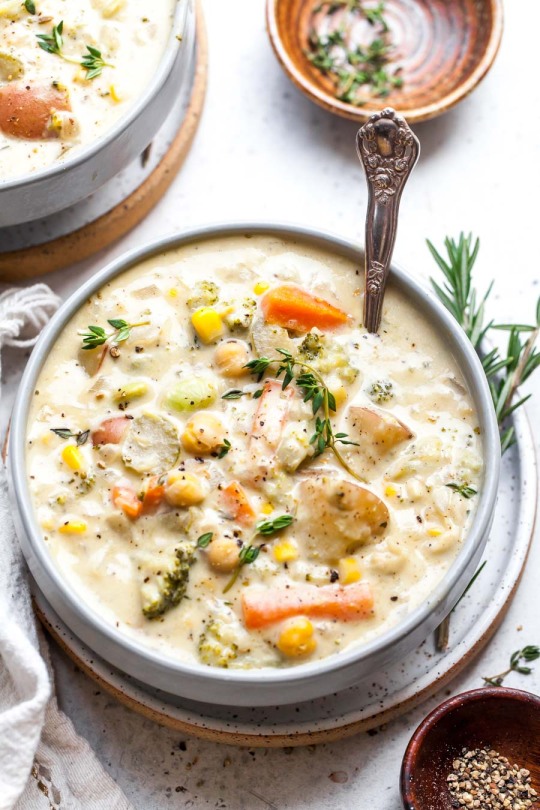
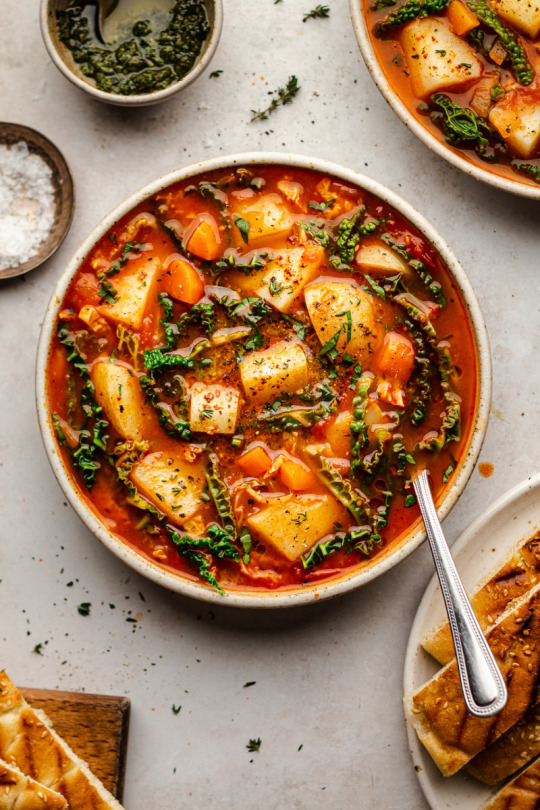
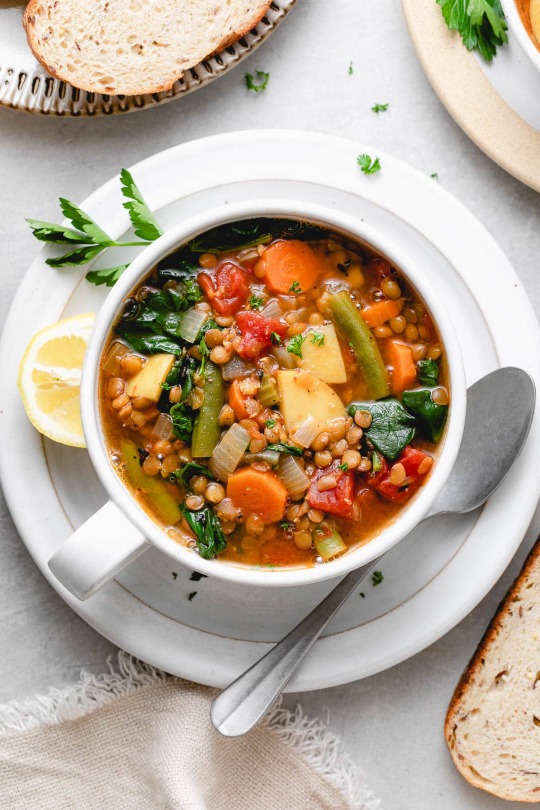

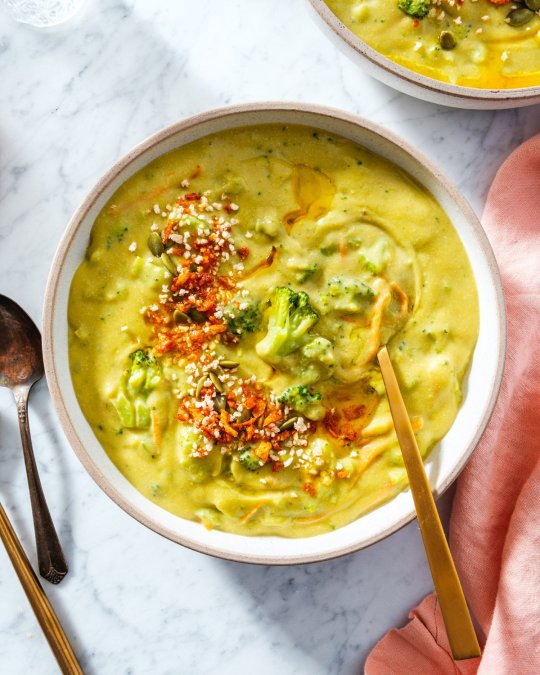


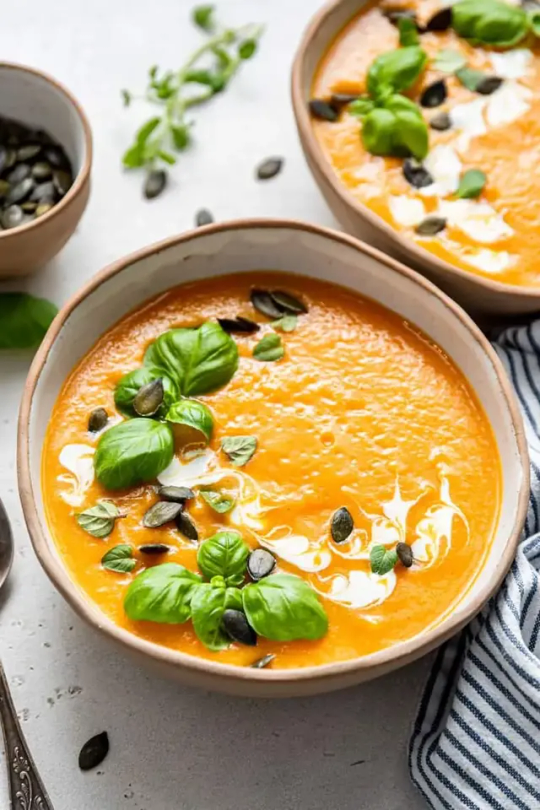

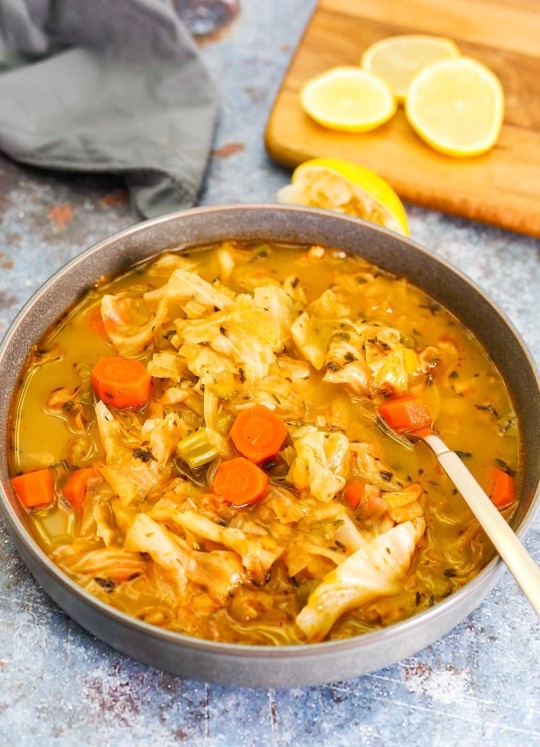
Creamy Vegetable Soup (GF/SF)
Vegan Vegetable Soup (GF/NF/SF)
One Pot Hearty Vegan Lentil Soup (GF/NF/SF)
Tuscan White Bean Soup (GF/NF/SF)
Vegan Broccoli Soup (GF/SF)
30 Minute One Pot Creamy Vegan Mushroom Soup (GF/SF)
Vegan Gnocchi Soup (GF option/SF)
Roasted Vegan Butternut Squash Soup (GF/SF)
Vegan Minestron Soup (GF option)
Vegan Cabbage Soup (GF/NF/SF)
#vegan#food#recipes#gluten free#soy free#nut free#soup#one pot#lentils#white beans#broccoli#30 minute#mushrooms#gnocchi#butternut squash#minestrone#cabbage
152 notes
·
View notes
Text
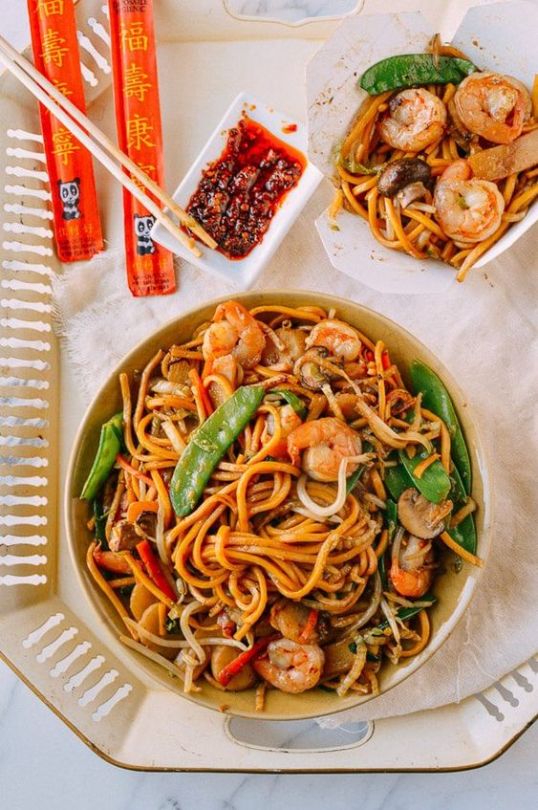
Shrimp Lo Mein
#snow peas#scallions#cabbage#mushrooms#shrimp#lo mein#noodles#recipe#food#food blog#recipes#delicious#yummy food
104 notes
·
View notes
Text

Vegan Bibimbap
#veganbunnychef#korean#dinner#lunch#savoury#food#recipe#recipes#carrot#carrots#mushroom#mushrooms#bibimbap#rice#zucchini#beansprouts#bean sprouts#cabbage#spinach#tofu#glutenfree#gluten free#vegan#veganism#vegetarian#plantbased#plant based#korean food#korean recipes
359 notes
·
View notes
Text




Vegetable foods
59 notes
·
View notes
Text






veggie friends!! (source)
credit if you use. thank you
#stim#vegetable plushie#vegetables#plushies#mushroom#cabbage#radish#daikon#pepper#corn#green#brown#white#yellow#red#fake food#hands free#spinning#cute#🌒 gifs
79 notes
·
View notes
Text
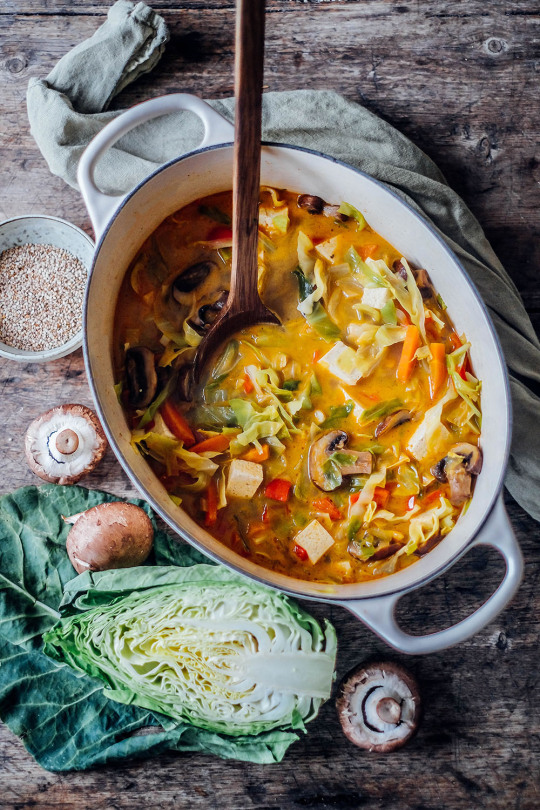
x
#food#delicious#tasty#lunch#dinner#soup#vegetable soup#warm#comfort#rustic#cottagecore#mushroom#cabbage#recipe
73 notes
·
View notes
Text
The leek on the left is a rehash of last night dinner with added cabbages. The new dish is this Braised Pig's Trotter & Pork Belly with shiitake mushrooms and whole garlic cloves in five-spice and dark soya sauce. Why have trotter and belly parts of the pig? That is because sis don’t eat the former. Drizzle the gravy over the white rice and dinner is ready to be consumed.

#Mum's Cooking#Home-Cooked#Dinner#Leek#Cabbage#Prawn#Minced Pork#Seafood#Vegetable#Braised Pig's Trotter#Braised Pork Belly#Five-Spice#卤肉#Shiitake Mushroom#Garlic Clove#Savoury#White Rice#Food#Buffetlicious
28 notes
·
View notes
Text
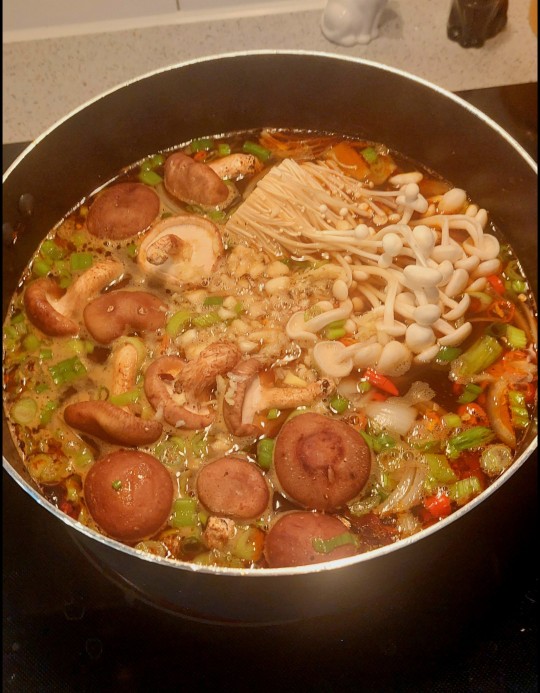
yayyyy dinner
#theres chunks of moose meat in here but you cant see it#once my mushrooms cook a bit more im gonna add noodles and cabbage#i also had to scrape a layer of oil off of the top of this before i added anything bc i havent worked with tallow based broths before#its still fatty but not too much#txt
15 notes
·
View notes
Text


























National Herbs and Spices Day
Add some zest and aroma to your dishes, and enhance your culinary creations with a variety of herbs and spices to awaken your taste buds!
A day to bring tons of flavor to everyone’s plates, National Herbs and Spices Day brings out the best taste in a vast array of dishes. From the daily salt and pepper to the more exotic saffron or black cardamom, herbs and spices offer the essence of seasoning to everyone’s table.
And National Herbs and Spices Day is the perfect time to celebrate!
History of National Herbs and Spices Day
People have been using herbs and spices to flavor their food probably since history has been recorded. Some of the earliest ideas guess that hunters would use leaves to wrap their meat in, and discovered quite by accident that the leaves gave the meat a certain type of flavor.
As time went on, more and more plants were discovered to be aromatic and flavorful, as well as often having other beneficial properties. Spices were discovered when the roots, leaves or other parts of plants were dried, then ground and used in cooking. Spices have also been used medicinally all throughout human history.
Ancient Egyptians are recorded to have used cinnamon, poppy and mint, while some early Chinese influences also mention the use of cinnamon (cassia), nutmeg, cloves and many other types of spices. Ancient Mesopotamian sources reveal that thyme, sesame, cardamom and coriander were important.
Throughout history, spices have been considered a valuable commodity and were even used as currency during some time periods. At one time, nutmeg was worth more than its weight in gold. Cloves were often given as bonuses to London dockworkers. And peppercorns were demanded as ransom in the 410 AD capture of Rome.
Beginning in 130 BC the “Silk Road”, was an important way for spice traders to get their wares from the East into the West, particularly between Greece and China. For more than 1500 years, this network of routes contained trading posts, thoroughfares and marketplaces strategically placed for travelers and traders.
Eventually, spice companies began to develop, bringing exotic and unique herbs and spices from far off places, first for the wealthy or royalty and then, eventually, to the common person. Today, just opening a person’s kitchen cabinet can introduce a collection of fragrant and flavorful spices and herbs that likely originated from all over the world!
Enjoying these and learning more about them is the perfect way to celebrate National Herbs and Spices Day!
National Herbs and Spices Day Timeline
2800 BC First mentions of cinnamon in Chinese writings
Native to Ceylon, what is now Sri Lanka, some mentions of cinnamon are made in the Cantonese language where it is known as “kwai”.
1500 BC Spices are used medicinally in Ancient Egypt
Papyrus documents note the use of fennel, caraway, coriander, garlic, mint, onion, poppy and peppermint in medical treatments.
1773 Spices replace black tea in America
With the political problems surrounding the Boston Tea Party, Americans begin making their tea from herbs and spices like lemon balm, sage, chamomile, spearmint, sassafras, and others.
1889 McCormick and Company is founded
This Maryland based spice company starts with door-to-door sales with storage in founder Willoughby McCormick’s basement. It will go on to become the largest spice and seasoning manufacturer in the world.
1897 Bram Stoker’s Dracula is published
With 21 different mentions of garlic, this novel brings to the forefront the legend that vampires have a deep aversion to this root herb.
How to Celebrate National Herbs and Spices Day
Observing National Herbs and Spices Day involves a tempting array of foods, whether cooking them, eating them, or both! Try out these ideas for celebrating National Herbs and Spices Day with the people you love:
Check Out a New Herb or Spice
Get healthier and more adventurous when you try out some new herb flavors instead. Some of these are rather versatile while others are very specific spices that work in certain dishes:
Turmeric. Anyone who has tried cooking dishes originating from India may have experienced turmeric. Also called curcumin, this bright golden colored spice is a relative of the ginger family that can be used to add flavor to curries, relishes, soups, pilaf, vegetables and much more.
Herbs de Provence. A blend of 5-6 different dried herbs, including rosemary, thyme, basil and more. This delectable combination of herbs brings out the full flavor of meats when used as a rub and also works well on grilled vegetables or meat dishes.
White or Pink Pepper. Most Westerners are familiar with black pepper, whether whole or ground, and use it fairly regularly in their cooking. But white pepper is a spice that is traditionally used Jewish or Asian cooking, and it changes the flavor of dishes quite significantly. Pink pepper is similar, but has a slightly sweeter flavor.
Get Healthier Using Herbs and Spices
According to a 2015 study, replacing salt with herbs and spices can cut a person’s daily intake of sodium by almost 1000 mg each day. This type of dietary reduction can help to minimize certain health issues such as high blood pressure, which is a major risk factor for stroke and heart disease.
Not only does substituting herbs and spices help reduce sodium, but certain types of herbs and spices can also help to reduce inflammation and minimize damage to the cells in your body when eaten on a regular basis.
Turmeric, cardamom, cinnamon, garlic, chili peppers and cumin are a few spices to get started with incorporating into a healthy diet.
Try Growing Your Own Herbs at Home
Whether outside in the garden or in some potted planters inside, growing herbs at home can be an amazing way to enjoy and celebrate National Herbs and Spices Day using fresh, homegrown items.
Some of the easiest to herbs that can be grown in the backyard or in a container garden at home include:
Basil. This versatile herb can be used in a variety of dishes, including pesto, tomato sauces and vinegars. Or it can be served fresh with tomatoes and mozzarella to make a caprese salad. Plant basil in a space that gets a lot of sun and has well-draining soil.
Mint. Useful in a variety of ways, mint is so prolific that many people like to grow it in containers to keep it from spreading and taking over the whole garden. With more than 600 different varieties, like peppermint, spearmint and chocolate mint, you’re sure to find one you’ll love to put in your iced tea or summer salads.
Parsley. This flat-leafed herb grows easily and is a delight to use for cooking soups and other dishes, as well as placing on dishes as a delightful garnish. Plus, even if it is grown outside it can easily be dried and kept to use over the winter months.
Rosemary. This one grows more like a shrub than a plant. It’s a woody evergreen that offers delightful aromas and loves to be in full sun. Rosemary is an herb that is also known to be healthy for the memory as well as being a mood booster.
National Herbs and Spices Day FAQs
Are herbs and spices the same thing?
Though they are used in similar ways, the difference is that herbs are the fresh part of the plant, while spices come from the dried fruit, stalk, root or fruit. Herbs can be fresh or dried.
What herbs and spices are in KFC?
While KFC’s 11 herbs and spices have been a “secret” for decades, the recipe probably contains salt, white & black pepper, thyme, celery salt, oregano, basil, garlic salt, ginger, dry mustard and paprika.
Do herbs and spices have calories?
Most herbs and spices have very few calories, but they can range from 1 calorie in ¼ cup of cilantro and 3 calories in a teaspoon of oregano to 73 calories in a bulb of fennel.
What herbs and spices are good for dogs?
Basil, cinnamon, ginger and parsley are all safe and healthful for dogs, while onion, salt, garlic, cocoa powder and nutmeg should be avoided for canines.
How to use herbs and spices in cooking?
It’s healthy and delicious to substitute herbs and spices for salt. Add fresh herbs early in recipes to blend flavors, or at the last minute for more distinct flavors. Add ground spices and herbs at the end of a longer cooking process to retain flavor.
Source
#Chicken Hunan Kung Pao#Penne with Truffles Chicken#Green Chili Stew#Navajo Taco#travel#USA#chicken with Succotash#Croûtons de Coulommiers rôtis au Miel et Poivre#salmon#Filet Port#cabbage with mushrooms#Sweden#Portugal#food#restaurant#National Herbs and Spices Day#NationalHerbsandSpicesDay#10 June#2021#original photography#vacation#Canada#Brisket Sliders#Niman Ranch Prime New York Strip
1 note
·
View note
Text

Polish Paszteciki
#food#recipe#appetizer#bread#pasztechiki#sauerkraut#cabbage#mushrooms#onions#caraway#allspice#marjoram#baking#vegetarian#polish
151 notes
·
View notes
Text
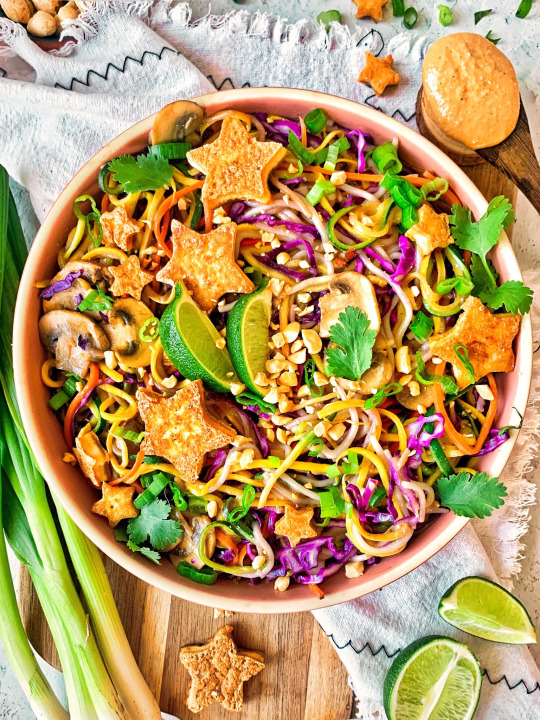
Vegan Rainbow Pad Thai with Veggie Noodles
#vegan#lunch#dinner#thai cuisine#southeast asian cuisine#noodle bowl#pad thai#noodles#zoodles#zucchini#carrots#cabbage#mushrooms#tofu#garlic#green onion#tamari#coconut aminos#coconut oil#lime#peanut butter#coconut milk#eat the rainbow
71 notes
·
View notes
Text

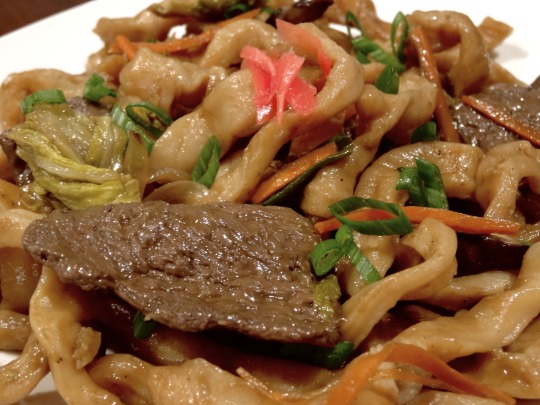
[ID: A plate full of thick noodles in a light sauce, topped with carrots, cabbage, scallions, red pickled ginger, and vegetarian beef. Second image is a close-up showing the texture of the beef. End ID]
焼きうどん / Yaki udon (Japanese fried noodles)
Yaki ("fried" or "grilled") udon combines thick, chewy udon with vegetables, seared meat, and a savory sauce. It's flavorful, filling, and, if you already have udon on hand, fast!
Udon have a place in 和食 (washoku; "Japanese food" or "harmonious food")—'traditional' Japanese food that predates the increased opening of Japan to foreign trade and influence in the Meiji period. Yaki udon, though, like curry udon and yakisoba, is a more recent entry into Japanese cuisine, and is associated with 洋食(yoshoku; Western-style food).
Udon may be purchased dried, frozen, or, if you have a local east Asian grocery store, fresh; or, you can make them yourself at home.
Recipe under the cut!
Patreon | Tip jar
A couple different types of sauce are commonly eaten with yaki udon; instructions to make each are given below.
Serves 2.
Ingredients:
For the dish:
2 servings (400g) fresh uncooked udon (180g dry; 500g frozen)
1 small yellow onion, thinly sliced
3 leaves green cabbage, cut into bite-sized pieces
2 inches (55g) carrot, julienned
3 scallions, cut into 2-inch (5cm) pieces
3 shiitake mushrooms, thinly sliced
1 Tbsp neutral oil
Ground black pepper, to taste
Benishoga (pickled red ginger), to garnish
Green "cannonball" cabbage (the kind most commonly sold in the U.S.) is the type usually used for yaki udon; if you choose to use napa cabbage, add it in a bit later in the cooking time than the rest of the vegetables.
For the meat:
1/4 cup (9g) heo lát chay or bò lát chay (optional)
1 cup hot water
1/2 tsp vegetarian 'beef' stock concentrate, or 'beef' pho seasoning
Heo lát chay (vegetarian pork slices) or bò lát chay (vegetarian beef slices) are Vietnamese meat replacements that can be found in the dried goods section of an Asian grocery store. They may also be labelled "vegetarian food," "vegetarian meat slice," or "vegan food." Pork belly is the most common meat used in yaki udon, but any meat or seafood substitute will work—or just omit the meat.
For the sauce:
Version 1:
1/4 cup usata sosu (ウスターソース), also often known as sosu (ソース)
1 tsp Japanese soy sauce, such as Kikkoman's
The linked recipe is for a from-scratch version of usata sosu, but you can also check my yakisoba recipe for a quick version.
Version 2:
Another common choice of sauce for yaki udon combines mentsuyu and soy sauce, instead of combining usata sosu and soy sauce (in the same proportion given above). If you don't have mentsuyu, you may substitute for it by combining:
2 Tbsp Japanese soy sauce
2 Tbsp sake
1 tsp mirin or granulated sugar
3/4 tsp kombu dashi powder, or powdered shiitake mushroom
Along with the 1 tsp soy sauce from above.
Instructions:
To cook the noodles:
1. Bring a large pot of unsalted water to a rolling boil. Shake excess starch off of the noodles and add them to the pot.
2. Cook, stirring occasionally with chopsticks or a pasta spoon, until the noodles are cooked through and no longer taste raw. This will take 10-13 minutes for fresh or dried noodles, and 13-15 minutes for frozen. If your frozen noodles are parboiled, they will only need to be blanched for 30 seconds to a minute: be sure to read the package instructions.
The noodles should be slippery and neither hard in the center (if dried) or mushy on the outside, but firm and "koshi" (こし or コシ; "with body," "al dente").
3. Drain and rinse with cold water to halt cooking and rinse off excess starch. Set aside.
For the meat:
1. Whisk stock concentrate into hot water until combined. Add heo or bò lát chay and allow to soak until rehydrated.
2. Simmer lát chay and stock in a small sauce pot until all the liquid has evaporated. Set aside.
For the dish:
1. Heat a large skillet or wok on medium-high for several minutes and then add oil. Sear lát chay, turning once, until browned on both sides.
2. Add sliced onion and continue to sauté, stirring occasionally, until translucent.
3. Add carrots, cabbage, mushrooms, and black pepper and stir to combine. Fry for a few minutes until vegetables are softened.
4. Add noodles and scallions and, using tongs or a spatula, stir to combine. Cook for a minute, until scallions are wilted.
5. Add sauce ingredients and stir. Cook for another few minutes, stirring occasionally, until the sauce has thickened slightly.
Top with more black pepper and benishoga and serve warm.
#Japanese#yoshoku#recipes#vegetarian recipes#cooking#udon#yaki udon#green onion#bò lát chay#carrot#shiitake mushrooms#cabbage
107 notes
·
View notes
Photo


Mushroom Cabbage Rolls with Lentils and Rice | everydayhealthyrecipes
61 notes
·
View notes